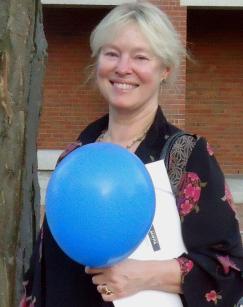 An article about Elizabeth Gilbert, author of ‘Eat Pray Love’ lampooned by some of us in our group novel, ‘Beat Slay Love,’ inspired me to open up this blog again.The
An article about Elizabeth Gilbert, author of ‘Eat Pray Love’ lampooned by some of us in our group novel, ‘Beat Slay Love,’ inspired me to open up this blog again.The
That and running into Kate Flora in the desert.
We both spent the month of March in California, she and her husband traveling around, visiting and touring, and me– Lise McClendon– with mine, hanging around in Palm Springs, LA, Paso Robles, and some touring as well.
 The discovery that we both happened to be in Coachella Valley at the same time is a happenstance of posting wildflower photos on Facebook. We had both gone for the sun and the flowers, to escape the northern winter which was pretty brutal this year. Kate escaped New England and I escaped Montana. It was great getting together, as always.
The discovery that we both happened to be in Coachella Valley at the same time is a happenstance of posting wildflower photos on Facebook. We had both gone for the sun and the flowers, to escape the northern winter which was pretty brutal this year. Kate escaped New England and I escaped Montana. It was great getting together, as always.
 So, this article about Elizabeth Gilbert in the New York Times. It celebrates her journey as a writer, especially since her blockbuster memoir, ‘Eat Pray Love,’ and her newest novel, ‘City of Girls.’ The new one looks great, I have to say. I also have to say I have never finished one of hers. I skimmed ‘Eat Pray Love’ based on friends’ advice. (I loved the Italian section.) And I tried to love ‘The Signature of All Things,’ a historical novel about a female botanist. It sounded right up my alley but alas. I should try again, I really should. (This rarely works out– does giving a book a second chance work for you?)
So, this article about Elizabeth Gilbert in the New York Times. It celebrates her journey as a writer, especially since her blockbuster memoir, ‘Eat Pray Love,’ and her newest novel, ‘City of Girls.’ The new one looks great, I have to say. I also have to say I have never finished one of hers. I skimmed ‘Eat Pray Love’ based on friends’ advice. (I loved the Italian section.) And I tried to love ‘The Signature of All Things,’ a historical novel about a female botanist. It sounded right up my alley but alas. I should try again, I really should. (This rarely works out– does giving a book a second chance work for you?)
Writers — and readers– come in many stripes, as many personalities as there are individuals. I am a private person, mostly. So Gilbert’s out-front sharing of her life on social media is scary to me, and a little suspicious. Why is she doing it, I cry! Is she such a fame whore? She doesn’t seem that way to her 1.6 million Facebook followers who hang on her every life change. They seem to dig it, but I find it terrifying. I don’t know why but I do. I know why I find it scary– because terrible things can happen and then EVERYBODY KNOWS! This is a reaction I confer to my upbringing, that the world is a frightening, dangerous place. Rationally I don’t always agree with that although lately it seems to be more true than not. But I prefer to explore my psyche through fiction. It is very safe that way. I am at heart a chicken. I wish it weren’t so, but in general, it is.
Gilbert is just turning 50 after having so many adventures. One day she will probably slow down. Maybe not, she probably hopes she won’t. But already she is becoming more protective of her private spaces, as the article’s writer notes. She doesn’t do book signings anymore, finding the confessional of readers crushing. One of the benefits of growing older is becoming at peace with who you are. Sometimes it involves a wrenching change to achieve that understanding, for instance, coming out at an advanced age. But better late than never. Suffering in silence because of constraints you probably only imagine is no way to live.
Sometimes the wisdom comes gently though, just a random thought before drifting off to sleep. Although I am soon to release my ninth book in the Bennett Sisters series I still am enjoying exploring their world. In my new novel I write about two characters who are new to me: a nine-year-old girl and a 70+ year-old Frenchwoman. The girl is distraught about *something* — mostly being an only child of divorced parents. The Frenchwoman dealt with her issues by decamping France for good after the Paris riots of 1968. I had wanted to write about the riots for some time and she offered me a tiny opening.
Both of these characters are enigmas to the other characters. No one can figure them out, why they act the way they do. Both are anxious, angry, and constantly blue. But why? I didn’t consciously know why I made these characters this way, except as a literary device– it makes the reader wonder what the answer is and read on. But later, it came to me, how I had created these two women, one a girl, one old. They are almost bookends, two people at the beginning and ends of their lives, both seeking answers, peace, stability. Having opposites in stories appeals to me.
The similarity of these characters– who never meet in the novel– made me think how universal they are in their questioning and seeking. We all do it, endlessly, even if we think we’re happy we don’t stop looking for more. It never really ends. (Unless you’re the Dalai Lama, I guess, but I haven’t asked him.) Will we ever find peace, happiness, love, and will it end before we want it to? The answer is maybe, and yes, it will. And so we search some more. 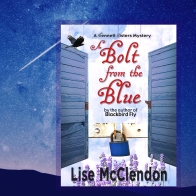
Reading a good book is a lovely– and private– way to start your search. And to shut out that terrible, frightening world while you’re at it.
The new one is up for preorder. Delivered to your inbox on launch day (approximately August 1!) PREORDER HERE

 As my fifth book in my Bennett Sisters Mysteries launches I feel this effect. When I run some cheap ads on Facebook for the new book, people discover the whole series. Now at five, there is some heft, some reason for people to think about connecting long-term to these characters.
As my fifth book in my Bennett Sisters Mysteries launches I feel this effect. When I run some cheap ads on Facebook for the new book, people discover the whole series. Now at five, there is some heft, some reason for people to think about connecting long-term to these characters.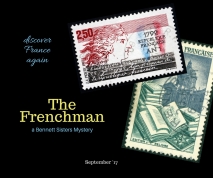 So Merle has a Frenchman. Initially, like Merle, I didn’t see how a long-distance relationship with a man who lived across an ocean would work. How could she work in New York City and Pascal work all over France’s wine country and they continue a romance? Because, although I didn’t write the series as a romance, women have love affairs— have you noticed? And they like to read about them. Merle’s affair with Pascal might have just been a fling, a curative, that first summer. But as the series goes along it’s obvious that Pascal thinks of it as something more. Although Merle isn’t sure what he thinks— he’s a Frenchman and you know how they are— her feelings mature, especially in this fifth book.
So Merle has a Frenchman. Initially, like Merle, I didn’t see how a long-distance relationship with a man who lived across an ocean would work. How could she work in New York City and Pascal work all over France’s wine country and they continue a romance? Because, although I didn’t write the series as a romance, women have love affairs— have you noticed? And they like to read about them. Merle’s affair with Pascal might have just been a fling, a curative, that first summer. But as the series goes along it’s obvious that Pascal thinks of it as something more. Although Merle isn’t sure what he thinks— he’s a Frenchman and you know how they are— her feelings mature, especially in this fifth book.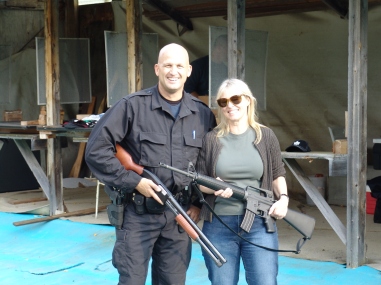 Kate Flora: Of course, as fiction writers, we are making some of it up. You all know that. What many readers don’t realize, though, is how, even in midst of creating fictional characters and fictional crimes, we’re constantly doing research to try and make it realistic.
Kate Flora: Of course, as fiction writers, we are making some of it up. You all know that. What many readers don’t realize, though, is how, even in midst of creating fictional characters and fictional crimes, we’re constantly doing research to try and make it realistic.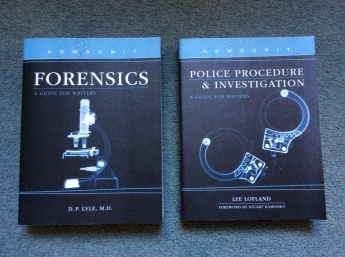 I’ve attended the Writers’ Police Academy
I’ve attended the Writers’ Police Academy  fascinating entomological evidence, which led me M. Lee Goff’s book, A Fly for the Prosecution. Working on a story about an excavation where bones are found led me to a whole host of books about bones and forensic analysis. Trying to make my cops feel authentic was helped by Lee Lofland’s book, Police Procedure and Investigation. Trying to make the crime scenes feel authentic led me D. P. Lyle’s Forensics.
fascinating entomological evidence, which led me M. Lee Goff’s book, A Fly for the Prosecution. Working on a story about an excavation where bones are found led me to a whole host of books about bones and forensic analysis. Trying to make my cops feel authentic was helped by Lee Lofland’s book, Police Procedure and Investigation. Trying to make the crime scenes feel authentic led me D. P. Lyle’s Forensics.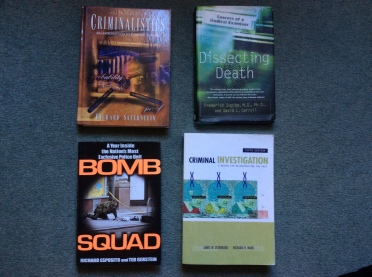 I even have two criminalistics textbooks, scored at library yard sales, and my own copy of Vernon Geberth’s Practical Homicide Investigation. That last comes with this story: I decided to preview investigation textbooks, and so I borrowed a copy of this through my local library. When the book arrived, the male librarian was reluctant to give it to me. “Are you sure you want to see this?” he said. “It’s pretty graphic.” I said I did and he reluctantly handed it over. It is pretty graphic. It also have fabulous checklists which help make my fictional investigator better at his job.
I even have two criminalistics textbooks, scored at library yard sales, and my own copy of Vernon Geberth’s Practical Homicide Investigation. That last comes with this story: I decided to preview investigation textbooks, and so I borrowed a copy of this through my local library. When the book arrived, the male librarian was reluctant to give it to me. “Are you sure you want to see this?” he said. “It’s pretty graphic.” I said I did and he reluctantly handed it over. It is pretty graphic. It also have fabulous checklists which help make my fictional investigator better at his job. As writers we sometimes feel blessed — or cursed — with a continuing education. Every day we write we are on some learning curve or other, struggling to remember what happened yesterday in the story, where it’s going, what the research says, and how to put the perfect sentence together. The advent of brisk fall weather reminds us of back-to-school, even though most of us haven’t been to actual school for decades. Autumn is a time of endings, but also beginnings. New pencils, new friends and old, clean reams of paper, spotless notebooks ready to be scribbled in: this is autumn.
As writers we sometimes feel blessed — or cursed — with a continuing education. Every day we write we are on some learning curve or other, struggling to remember what happened yesterday in the story, where it’s going, what the research says, and how to put the perfect sentence together. The advent of brisk fall weather reminds us of back-to-school, even though most of us haven’t been to actual school for decades. Autumn is a time of endings, but also beginnings. New pencils, new friends and old, clean reams of paper, spotless notebooks ready to be scribbled in: this is autumn.
 Lise is not happy about NOT attending this year’s World Mystery Convention, Bouchercon, in New Orleans. It’s always a blast, a sort of writers high school reunion. So she adds this silly photo from last year’s event in Raleigh, NC, to remember the good times.
Lise is not happy about NOT attending this year’s World Mystery Convention, Bouchercon, in New Orleans. It’s always a blast, a sort of writers high school reunion. So she adds this silly photo from last year’s event in Raleigh, NC, to remember the good times. one, The Girl in the Empty Dress. To mark the occasion and thank readers she is giving away copies of Blackbird Fly, the first in the series.
one, The Girl in the Empty Dress. To mark the occasion and thank readers she is giving away copies of Blackbird Fly, the first in the series. 







 In books and stories we are often drawn to the most colorful characters. Whether we’re writers or readers, villains and jokesters can make or break a book. We love when the hero’s perfect day is shattered by something funny or humiliating, when the heroine is shocked by a little mayhem. Is it any wonder we are fascinated with bad boys, motorcycle gangsters, despicable rich assholes, and the ultimate chaos-creator, the serial killer?
In books and stories we are often drawn to the most colorful characters. Whether we’re writers or readers, villains and jokesters can make or break a book. We love when the hero’s perfect day is shattered by something funny or humiliating, when the heroine is shocked by a little mayhem. Is it any wonder we are fascinated with bad boys, motorcycle gangsters, despicable rich assholes, and the ultimate chaos-creator, the serial killer?
 a wind chill factor predicted to be around minus thirty. Not a good day to be outside tramping around in the snow, but as writers know, bad weather is just another reason to be at our desks. Right now, I’m sitting at mine, doing a form of mental triage as I sort out the months ahead.
a wind chill factor predicted to be around minus thirty. Not a good day to be outside tramping around in the snow, but as writers know, bad weather is just another reason to be at our desks. Right now, I’m sitting at mine, doing a form of mental triage as I sort out the months ahead.